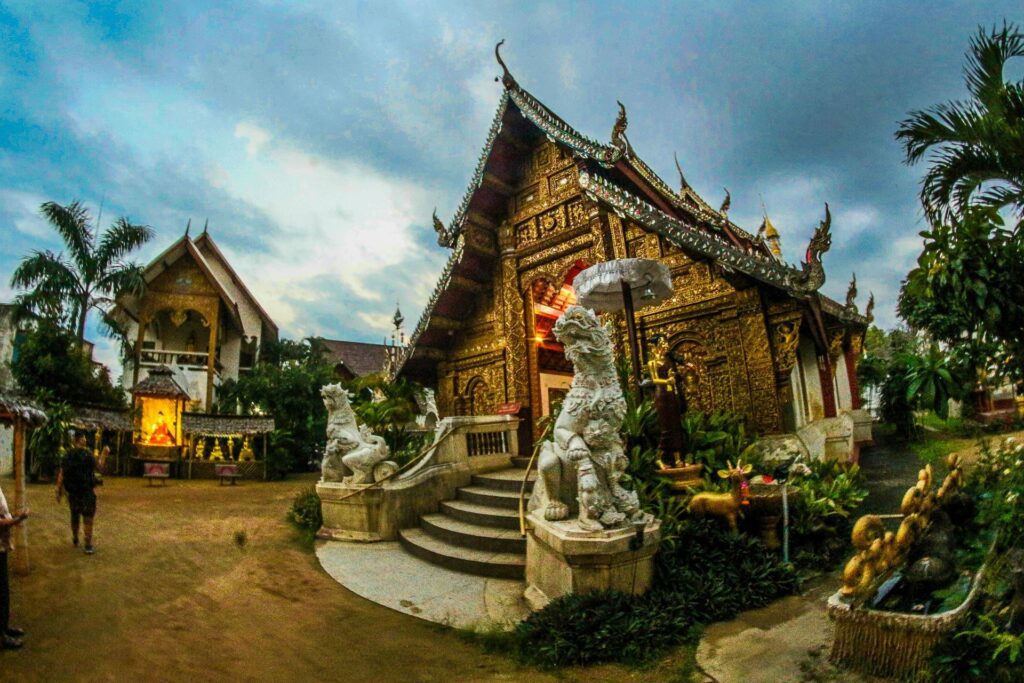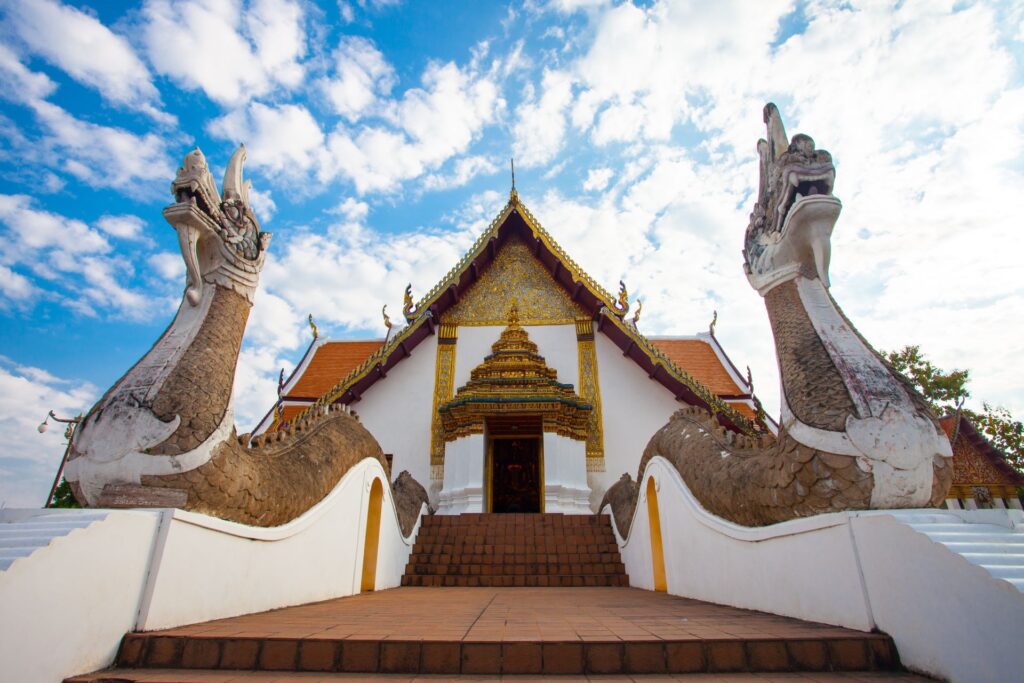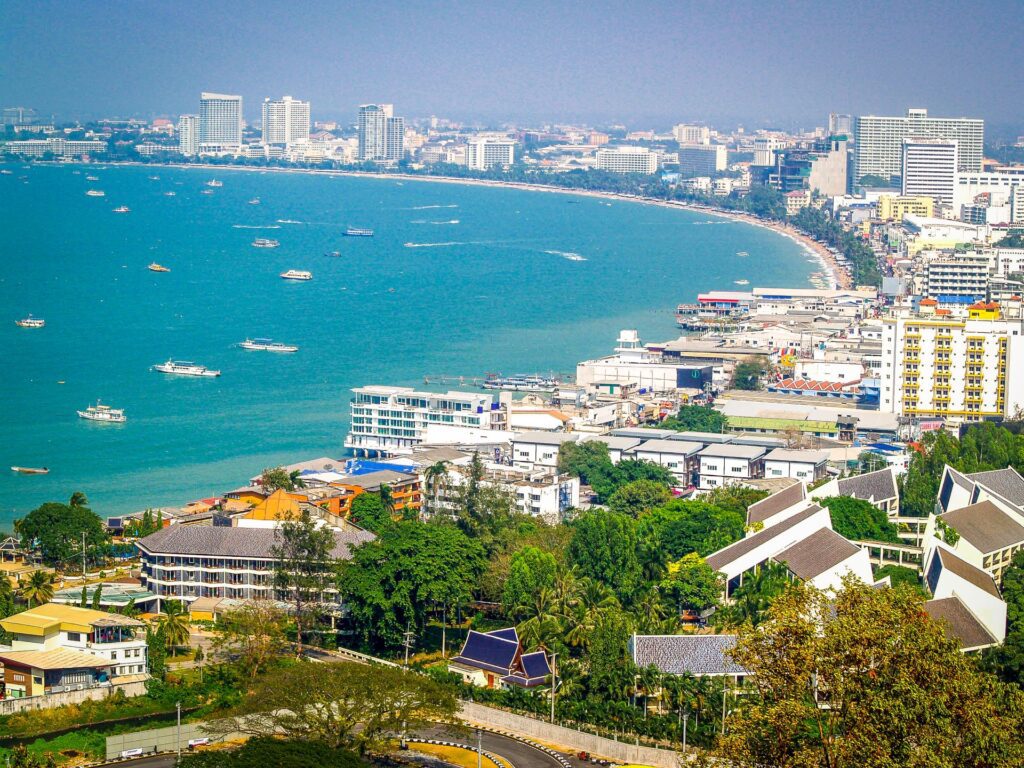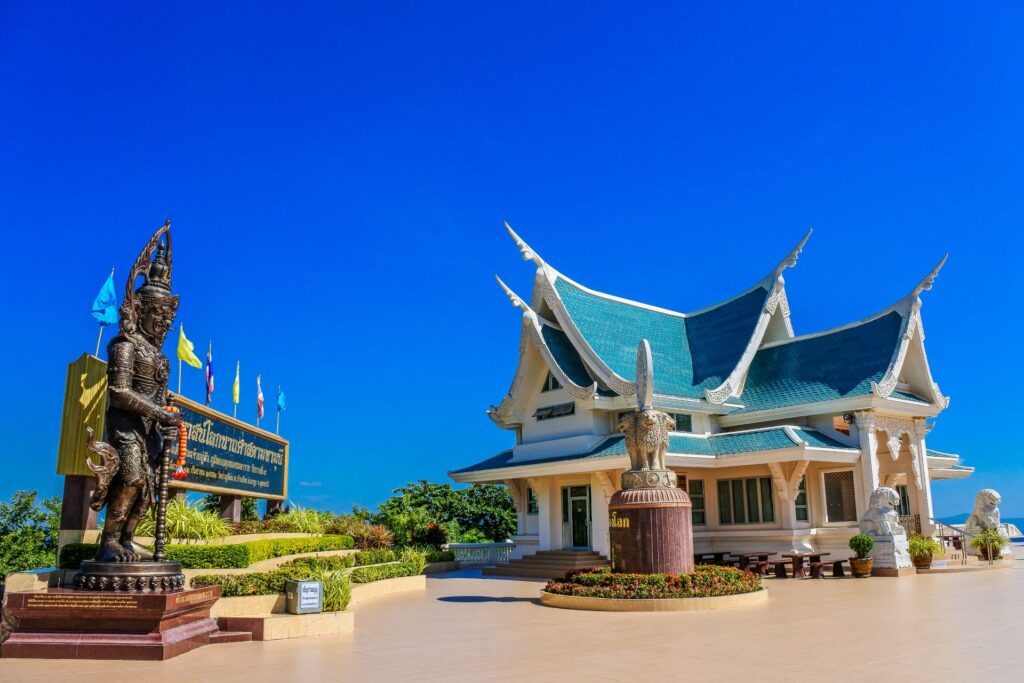Thai culture, rich in its spiritual depth and a profound connection to nature, has always been a cornerstone of the country’s architectural evolution. Its influence on modern villa design can be seen in the use of intricate wooden carvings, thoughtful integration of natural materials, and a deep respect for balance and harmony. By incorporating these traditional Thai elements into modern architecture, you not only create a beautiful, functional space but also pay tribute to the country’s cultural legacy. Villas that embrace this blend of tradition and innovation offer an immersive living experience that reflects the unique essence of Thai architecture.
In this article, we’ll explore how modern architectural design can be enriched through the thoughtful incorporation of Thai cultural elements—from spatial layouts inspired by traditional homes to the use of locally sourced materials and symbolic features. By merging the past with the present, you can create a villa that stands as a testament to both contemporary elegance and cultural heritage.
Thai Spatial Layout and Flow
One of the most defining elements of Thai architecture is the focus on spatial layout and the natural flow between indoor and outdoor spaces. Traditional Thai homes are known for their openness, allowing natural light and ventilation to enhance the living experience while maintaining a deep connection with the surrounding environment. This openness is a key feature that continues to influence modern villa design, where seamless integration with nature is a priority.
The Concept of “Sabai Sabai”
“Sabai Sabai” is a well-known Thai phrase that means comfort, relaxation, and ease—a fundamental principle in Thai lifestyle and architecture. Traditional Thai homes embody this through spacious layouts that encourage a natural flow of air and light, creating an inviting and peaceful environment. Modern villas inspired by this concept often feature open-plan living areas, large windows, and expansive outdoor terraces or verandas. These design choices foster a serene atmosphere, blending indoor and outdoor living spaces effortlessly.
To incorporate the “Sabai Sabai” concept, consider floor-to-ceiling windows, open spaces that flow into outdoor terraces, and rooms that are interconnected, minimizing physical barriers. This enhances the feeling of relaxation and comfort, reflecting the harmony with nature that is so central to Thai culture.
Elevated Structures and Practical Design
Traditional Thai homes are elevated on stilts, a design rooted in practicality for the tropical climate, as it helps with flood prevention, increases airflow, and reduces moisture accumulation beneath the home. While modern villas may not need to replicate this entirely, elevated structures are still an effective way to address environmental factors such as humidity and airflow.
Incorporating this design element into a villa creates a more efficient and comfortable living environment. Even slight elevation of the structure can improve ventilation and temperature regulation, reducing reliance on artificial cooling systems. This practical design feature also imparts a sense of lightness, enhancing the fluidity of the space and mirroring the airy feel of traditional Thai homes.

Natural Materials and Craftsmanship
In Thai culture, architecture is not only about function but also about celebrating the natural world and the artistry of local craftsmen. The use of natural materials such as wood, bamboo, and stone creates an organic connection with the environment while adding beauty and practicality to homes in tropical climates. These materials are selected for their ability to keep interiors cool and blend harmoniously with Thailand’s lush surroundings.
Teak Wood and Bamboo
Teak wood has long been a cornerstone of traditional Thai architecture, prized for its resilience against termites, moisture, and decay. The richness and natural warmth of teak make it an excellent choice for flooring, ceilings, and furniture in modern villas. Whether it’s used in outdoor decks or elegant interior paneling, teak wood brings a timeless, organic quality to the home that resonates with Thai heritage.
Similarly, bamboo plays a significant role in Thai construction and decor. Its lightweight yet sturdy nature makes it an ideal material for outdoor furniture, decorative screens, and pergolas. Bamboo’s eco-friendly characteristics align perfectly with modern sustainable practices, and its natural texture adds an earthy charm to any villa. Integrating bamboo into the design helps create a sense of balance between nature and modern living, reflecting Thailand’s deep connection with the natural world.
Handcrafted Thai Accents
Thai craftsmanship is renowned for its intricacy, with handcrafted elements such as wood carvings and hand-painted tiles adding cultural depth and personality to a space. Incorporating these artisanal details into a modern villa brings a touch of Thai tradition to contemporary design. Consider using ornate carved wooden doors, intricate paneling, or handcrafted ceramics to enhance the cultural richness of the home.
These artisanal elements not only celebrate the skill of local Thai artisans but also add a unique, personal touch to the villa. Whether through decorative columns, hand-carved panels, or traditional art pieces, these features create a beautiful contrast with sleek modern finishes, creating a truly authentic Thai atmosphere that feels both luxurious and grounded in tradition.

Thai Symbolism and Feng Shui
Thai architecture is deeply influenced by spiritual beliefs and symbolism, with design elements often reflecting Buddhist principles and traditional Feng Shui practices. Integrating these symbolic features into modern villas can help create a living space that not only feels peaceful and balanced but also honors Thai cultural values. This connection to spirituality and harmony makes a significant impact on the overall ambiance of the home, offering both aesthetic appeal and personal well-being.
Spirit Houses and Outdoor Shrines
In traditional Thai culture, many homes include a spirit house, a small shrine dedicated to the protective spirits of the land. Even in modern villa design, incorporating an outdoor shrine or altar can maintain this cultural tradition. Spirit houses are often placed in gardens or courtyards, away from the main building, in a serene, respectful location.
Incorporating a spirit house into a villa’s landscape design not only adds a culturally significant feature but also provides residents with a quiet, reflective space for meditation or personal prayer. This feature offers a way to honor the spiritual aspects of Thai culture while enhancing the overall sense of peace and tranquility within the villa.
Feng Shui and Harmonious Living
Feng Shui, the ancient Chinese practice of arranging spaces to harmonize with the natural flow of energy (chi), is a principle that has been embraced in Thai architecture. In both traditional and modern Thai homes, rooms and furniture are arranged to promote positive energy flow, balance, and well-being.
Incorporating Feng Shui principles into a modern villa in Thailand means designing with intentionality. For instance, positioning windows and doors to maximize natural light and air circulation not only aligns with energy flow but also enhances the villa’s connection to the tropical environment. Strategically placing water features, like fountains or pools, near the entrance or central areas can attract positive energy and symbolize prosperity, according to Feng Shui teachings. This holistic approach to design ensures that the home is not only physically appealing but also energetically balanced, promoting comfort and harmony for its residents.
Blending Modern Amenities with Thai Traditions
While incorporating Thai cultural elements into villa design is essential for creating an authentic atmosphere, balancing these traditions with modern conveniences can elevate the living experience. The fusion of Thai architectural heritage with the comforts of contemporary living results in a villa that feels grounded in tradition yet innovative and luxurious.
Smart Technology Meets Thai Aesthetics
Achieving a seamless blend of modern technology and traditional Thai aesthetics requires careful integration. By embedding smart home systems—such as automated lighting, climate control, and security features—into the architecture, villas can retain their cultural charm while providing cutting-edge convenience. For instance, hidden lighting fixtures can be placed within carved wooden beams or woven bamboo panels, maintaining the visual integrity of Thai design. Similarly, automated systems for adjusting temperature or controlling lighting can be integrated subtly into ornate carvings or natural materials, ensuring that the modern features enhance, rather than detract from, the villa’s traditional appeal.
This approach allows homeowners to enjoy the benefits of smart home technology without compromising the beauty of Thai craftsmanship. Whether it’s controlling lighting with the touch of a button or adjusting the villa’s environment to suit the tropical climate, these features make life easier while preserving the unique aesthetic.
Eco-Friendly Design with a Thai Twist
Sustainability is becoming a core principle in modern architecture, and it aligns perfectly with Thai cultural values, which emphasize living in harmony with nature. By incorporating eco-friendly design elements, villa owners can create homes that are not only visually stunning but also environmentally responsible. Sustainable materials, such as reclaimed wood or bamboo, reflect the natural beauty of Thai architecture while minimizing the environmental footprint.
Energy-efficient technologies, such as solar panels and green roofs, can be seamlessly woven into the design, reducing energy consumption and enhancing the villa’s sustainability. By integrating these modern, eco-conscious practices with traditional Thai aesthetics—such as open-air layouts that maximize natural ventilation—villas can offer an experience that is both culturally authentic and forward-thinking.

Heveatecture’s Approach to Integrating Thai Culture in Modern Design
At Heveatecture, we believe that architecture should tell a story—one that reflects not only the individual homeowner but also the environment and cultural heritage of the location. In Koh Samui, where the natural beauty and rich Thai traditions provide an ideal backdrop for innovative design, Heveatecture ensures that every villa we create blends local cultural elements with modern aesthetics.
Honoring Thai Heritage in Every Detail
When designing luxury villas, Heveatecture places a strong emphasis on integrating Thai cultural elements, from spatial layouts inspired by the traditional “Sabai Sabai” concept to the use of natural materials like teak wood and bamboo. These features are not merely decorative but serve functional purposes, such as improving airflow and creating a connection with nature. By crafting villas that embody Thai craftsmanship, including intricate wood carvings and natural stone elements, we create living spaces that honor Thailand’s heritage while providing the comforts of modern living.
Sustainable and Modern Designs with a Thai Twist
Heveatecture’s commitment to sustainability goes hand-in-hand with Thai cultural values of respecting nature. Whether through the use of locally sourced materials, the incorporation of eco-friendly technologies, or the thoughtful design of open spaces that maximize natural ventilation, our projects aim to minimize environmental impact while maintaining cultural authenticity. Each villa is carefully designed to reflect the traditional Thai philosophy of harmony, creating spaces that not only look beautiful but are also sustainable, energy-efficient, and environmentally responsible.
By combining modern innovation with traditional Thai design principles, Heveatecture creates villas that offer a unique living experience—one that is deeply rooted in Thailand’s rich architectural history while meeting the demands of contemporary lifestyles.

Conclusion
Thai culture provides a wealth of inspiration for modern architectural design, offering timeless principles that can be integrated into luxurious, functional villas. By blending traditional Thai elements like open layouts, natural materials, and symbolic features with modern technologies and eco-friendly practices, villa owners can create homes that are not only visually captivating but also sustainable and technologically advanced. The result is a living space that honors Thailand’s rich heritage while embracing the future, offering a perfect balance of tradition and innovation.
FAQs
Thai cultural elements like open-plan layouts, natural materials (teak wood, bamboo), and symbolic features such as spirit houses or Feng Shui can enhance the design of modern villas.
Teak wood is durable, resistant to pests and humidity, and provides a warm, natural look that reflects Thai craftsmanship.
Feng Shui principles are often used to ensure a positive energy flow, aligning rooms, doors, and windows to promote harmony and well-being in the home.
Natural elements such as bamboo, stone, and greenery help create a seamless connection with the outdoors, improve air quality, and enhance the villa’s aesthetic appeal.
Yes, modern technology such as smart home systems can be discreetly integrated into traditional Thai designs, providing comfort without compromising aesthetics.
Spirit houses are small outdoor shrines that honor protective spirits and are often included in Thai villa designs to reflect cultural traditions and offer a space for meditation.
Outdoor spaces can be designed with similar materials, furnishings, and layouts as indoor areas, creating a fluid transition between indoor and outdoor living.
Spatial flow enhances the feeling of openness and relaxation, which is central to Thai design principles, especially in tropical climates.
Thai architecture’s use of natural materials, passive cooling techniques, and integration with the surrounding environment makes it inherently eco-friendly.
Biophilic design, which incorporates natural elements like greenery and water, strengthens the connection between indoor and outdoor spaces, fostering a deeper harmony with nature.
